Add A Little Life To Your Flies
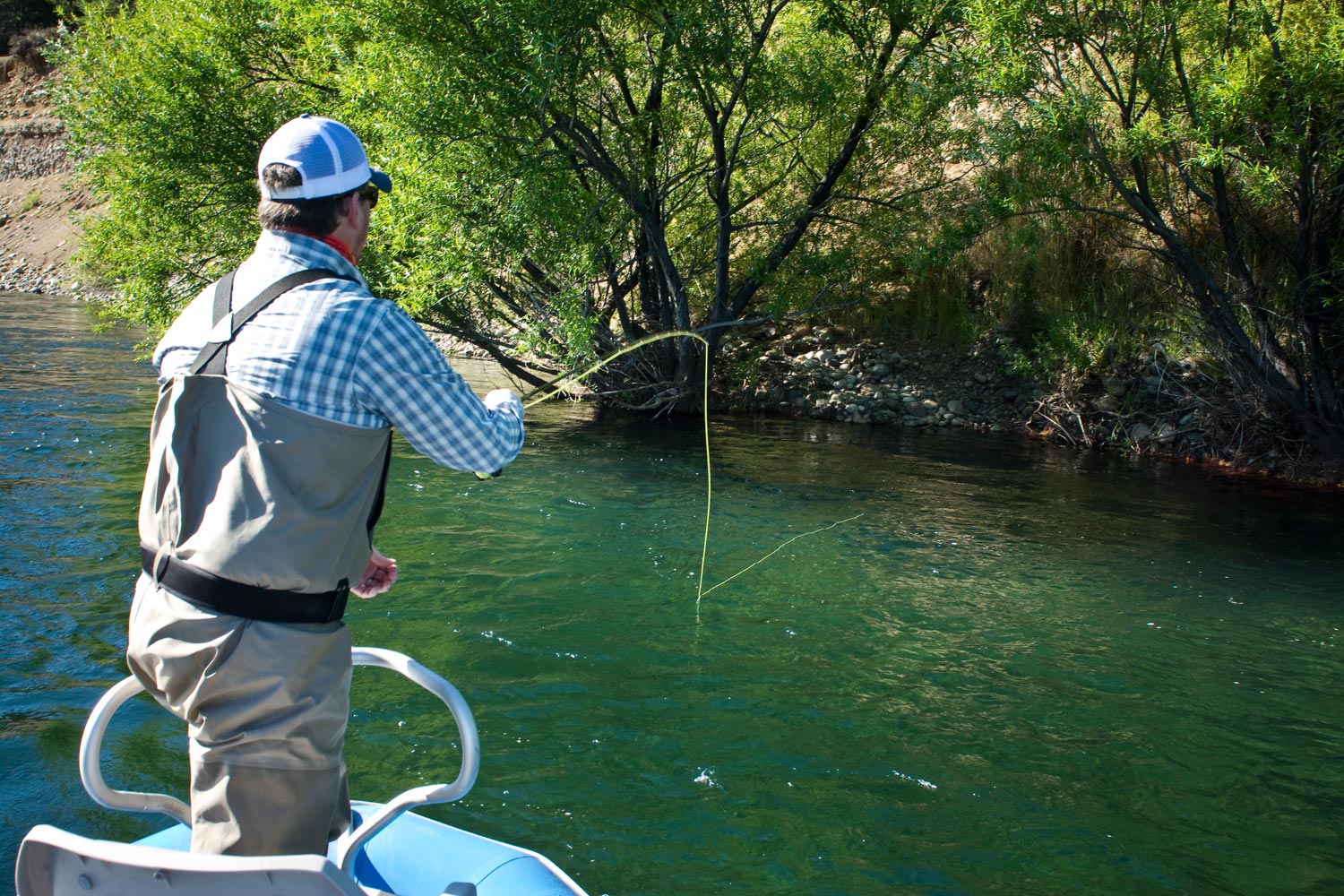
“TWITCH, TWITCH, STOP!”, EXCLAIMS MY GUIDE, EDUARDO.
I’ve heard these words all week and now it’s just become second nature for me as soon as my dry fly hits the water. I have to admit though, it’s been extremely effective.
We’re taught as newbies to focus on presenting our fly on a drag free, dead drift and that’s great. It’s good to start with the fundamentals. It’s one of many pieces of the puzzle that sets a foundation for us to build from as we progress as fly anglers. Sometimes the situation calls for a little persuasion. A little twitch, jiggle, shake, or twerk is just want we need in order to entice a strike.
Movement helps imitate life. Think about it for a second. How often do you
Read More »Who’s Afraid of the Big Bad Guide
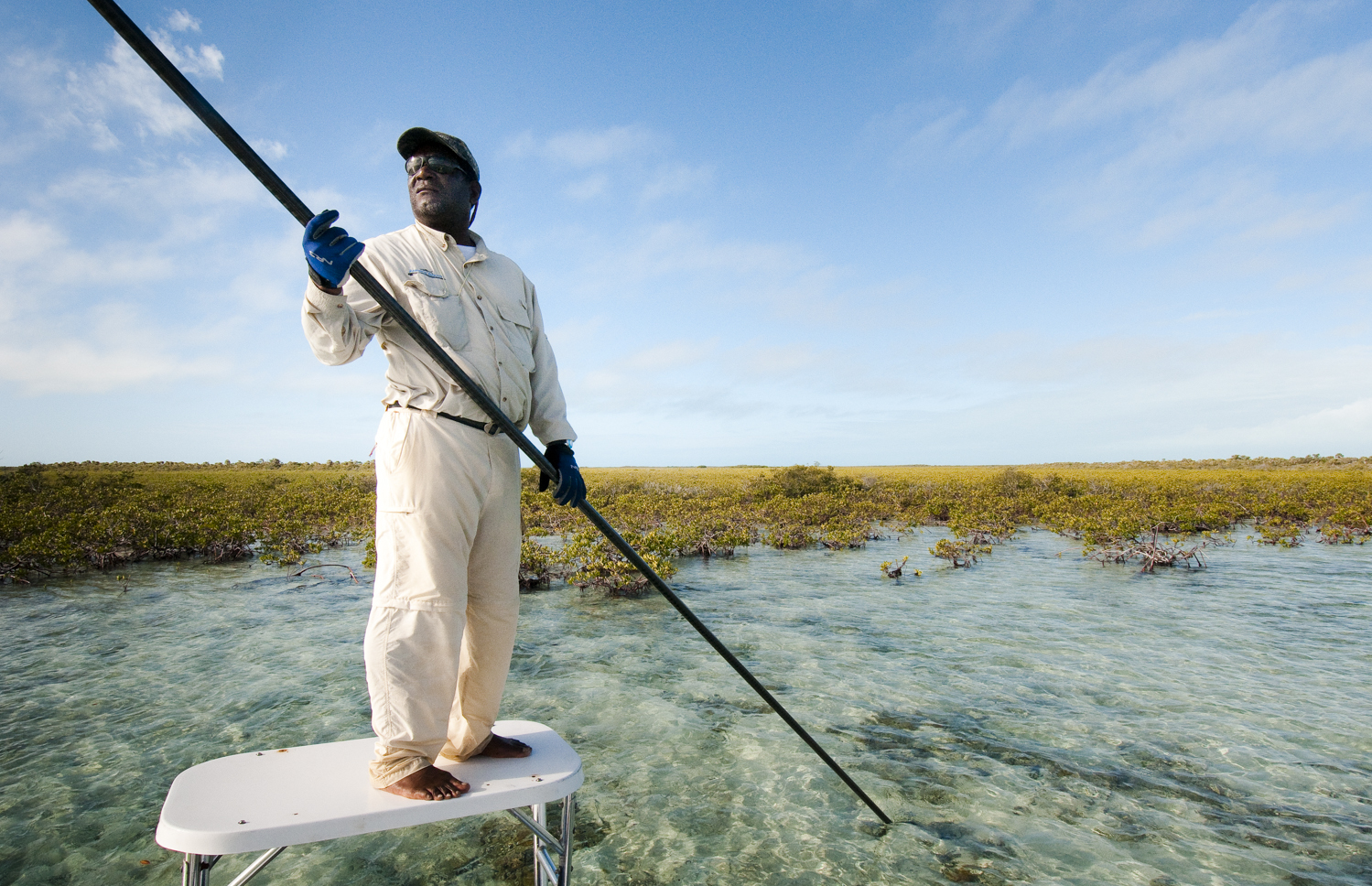
SCOTT IS ALMOST IN TEARS.
He is doubled over laughing. The drag on his reel is screaming. If he doesn’t get his composure soon he’ll likely loose a nice fish. From the platform Josie Sands is steadily chewing his ass.
“No Scott! That was all wrong,” the disgust in his voice palpable.
“But I caught the fish?”
“I don’t care, it’s still wrong.”
Josie is the head bonefish guide at Andros South and his reputation as a hard ass is world renowned. He is relentless, barking direction, criticism and sarcastic commentary from his perch on the stern. Today he’s ripping my buddy Scott a new one for catching a bonefish. Neither Scott or I remember what it was he did wrong, and apparently neither does the fish, but Josie is pissed.
There are a lot of guests at Andros South who will not fish with Josie. Frequently they are C-level executives who are used to doling out the criticism and don’t like being on the receiving end. Frankly, some of them are racist who don’t like being called out by a black man. Some just have fragile egos that can’t take the pounding. Whatever the reason, I feel sorry for those guys. They have no idea what they are missing.
I love Josie. I consider him a friend. I go out of my way to fish with him and have for years. For this, I get twice the tongue lashing everyone else gets. Josie will chew my ass and I will reply something like, “I love you too Josie,” and he will laugh and say, “you my boy!” I’m not sure which of us enjoys it more but I do know who reaps the reward. Me.
The truth about Josie Sands is not that he’s a grumpy old flats guide. It’s not that he’s a hard ass or bitter in any way. If that’s how he sounds, you’re not listening. Josie is a serious dude, to be sure, but in a good way. He’s
Read More »You Can’t Go Home
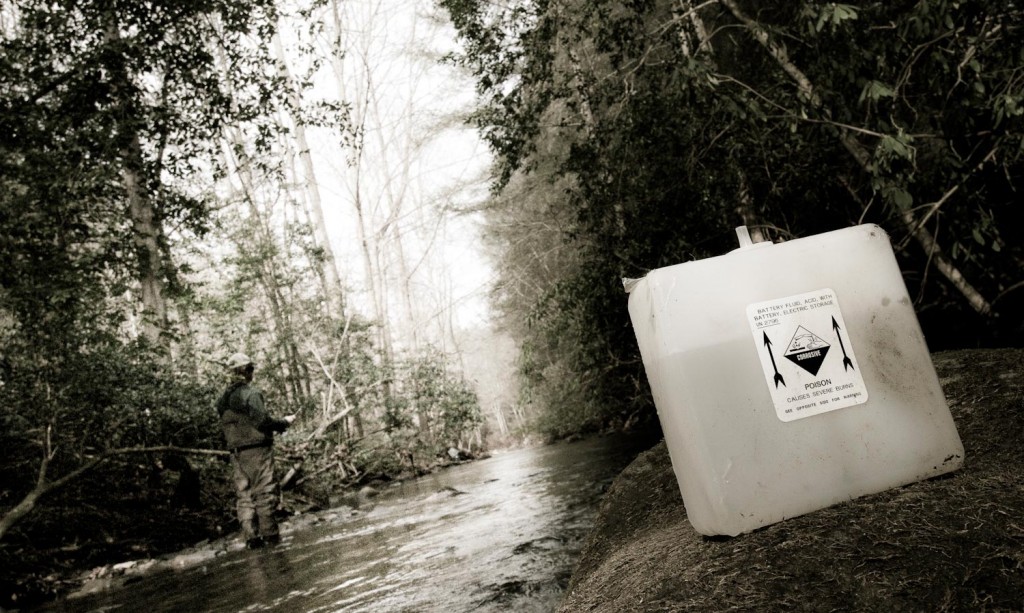
William S. Burroughs, in his essay “Dinosaurs” wrote, “biologically speaking the one direction you can’t go is back”.
He was, of course, making a social comment but I was reminded of that idea while fishing the other day with a good friend. Joel Dickey was up visiting family over the holidays and was excited to do some trout fishing. For weeks he had been telling me that he was going to take me to the best trout stream he’d ever fished. The little creek in Tennessee that he grew up on. A stretch of private water owned by his aunt. I was excited to see the water and to spend a day wetting my boots with Joel.
I knew this was either going to be really good, or really bad. Joel has been living and guiding in the Keys for a long time now and things change. Things always change and where trout streams in the southeast are concerned, usually not for the better. In Joel’s memory this little creek was gin clear and full of big wild trout. When we arrived we found a different stream altogether. There were no fish of any kind. Only old tires and garbage, including a battery acid bottle. A sad sign of an unloved stream.
We moved on to a local tailwater and got into some nice fish and even some surface action, which is great for December, but Joel was heartbroken. It’s tough to see a stream
Read More »Don’t toss your tenkara rod in the water
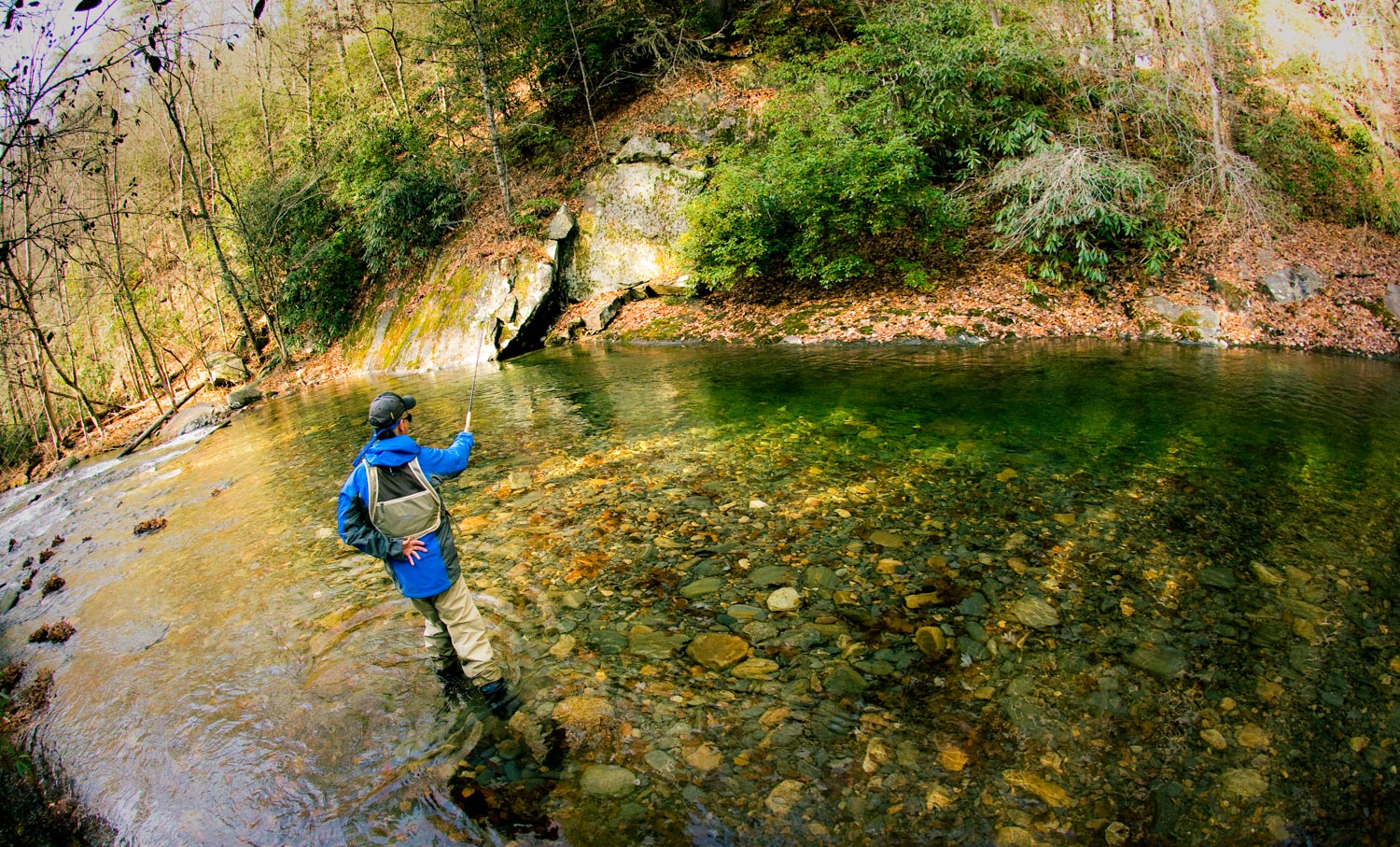
It’s a great rod, hang on to it.
There is word going around that should you hook into a large fish with a tenkara rod, the best option will be to toss the rod in the water. I am writing this short piece to let you know that, NO! Tossing your tenkara rod in the water is neither recommended nor necessary.
Frankly, I could stand to benefit from having you toss your beautiful tenkara rod in the water, and then buy another one from me. But, this advice is based on old lore and old technology, and I do not think it should live on.
A few years ago, a fellow who shall remained nameless here, told me about his first experience with tenkara. On his first outing with a tenkara rod he hooked into a good size fish. He was with a friend who had a bit more tenkara experience. As he saw the rod bending to a point he’d never seen a rod bend before he asked his friend what to do, and his friend advised him to toss the rod in the water.
As the nameless fellow continued to tell me, he tossed the rod in the water and watched it drift away for a few moments until it stopped. The pool he was fishing was shallow and the currents not strong. He waded out to it, picked up the rod, and to his surprise the fish was still attached to the fly. He fought the fish again, and again fearing the rod could break at any moment he tossed it in the water once more, waded back out to the rod, picked it up and continued to fight the fish.
This time, finally the fish came in, he told me. After hearing his tense account, I waited for the punch line. I expected him to tell me he had hooked a ‘gator, a fish taller than him, or a submerged log caught in bizarre currents. So, I asked him, “how big was it?”, to which he replied, 17 inches!
It was but two hours earlier I had landed a rainbow of 20 inches in size and brought it to hand within 3 minutes, without tossing my rod in the water! So, you can understand why I had a smirk in my face when I heard this.
WHERE DID OLD LORE OF THROWING THE ROD IN THE WATER ORIGINATE?
Read More »5 Reasons Why I use the Uni-Knot for Trout Fishing
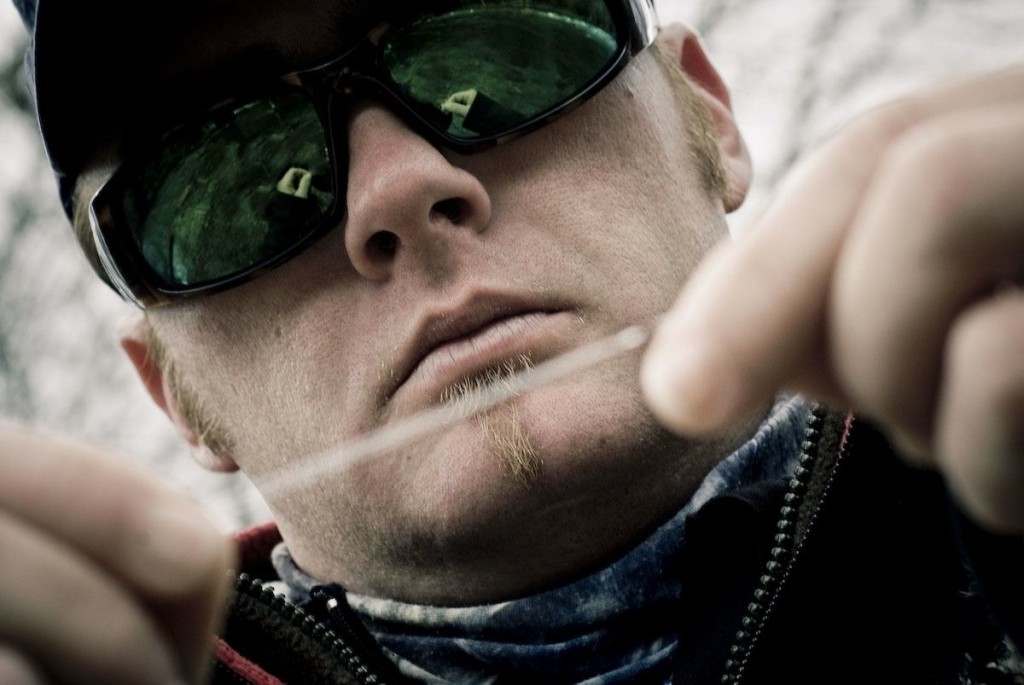
There’s plenty of other fishing knots out there that have better knot strength than the Uni-Knot, but that shouldn’t be the only factor you look at when you’re choosing what knot to use on the water.
Reliability, how quick and easy it is to tie, type of rig your fishing, and functionality should all be weighed into the equation when deciding on knot choice. The decision to employ the Uni-Knot for my personal fishing and guiding has made my life easier on the water because of its versatility and ease of tying.
5 Reasons Why I use the Uni-Knot for Trout Fishing
1. The Uni-Knot is quick and easy to tie with fine tippet and small flies, particularly in low light situations.
2. The Uni-Knot is very reliable, is rated at 90% strength, and won’t slip (fail) like the improved clinch knot will if it’s tightened down incorrectly.
3. I only need a small amount of tippet to tie the Uni-Knot. That lengthens the life of my leaders, cuts back on tippet usage, and saves me money in the long run.
4. The Uni-Knot allows me to quickly change out my lead fly in my tandem nymph rig and also saves me time untangling knots on the water since it can be loosened and re-tightened on the go.
5. The Uni-Knot serves other purposes other than tying your fly onto your leader. It also can be used to join two lines and used to secure your backing to the reel.
The Uni-Knot Can Save You Time Untangling Knots
Untangling knots is a subject that I know far too well being a full-time fly fishing guide. These days I can often spot a tangle in mid-air or by the way the leader lays out on the water. I’ve grown accustom to having clients look at me with a bewildered look when I tell them to stop casting and strip in. Moments later, when they get their fly rig in, the confused look leaves their faces and the question of why is answered. Using the Uni-Knot in my
4 Tips for Getting Better Hookups With Tarpon
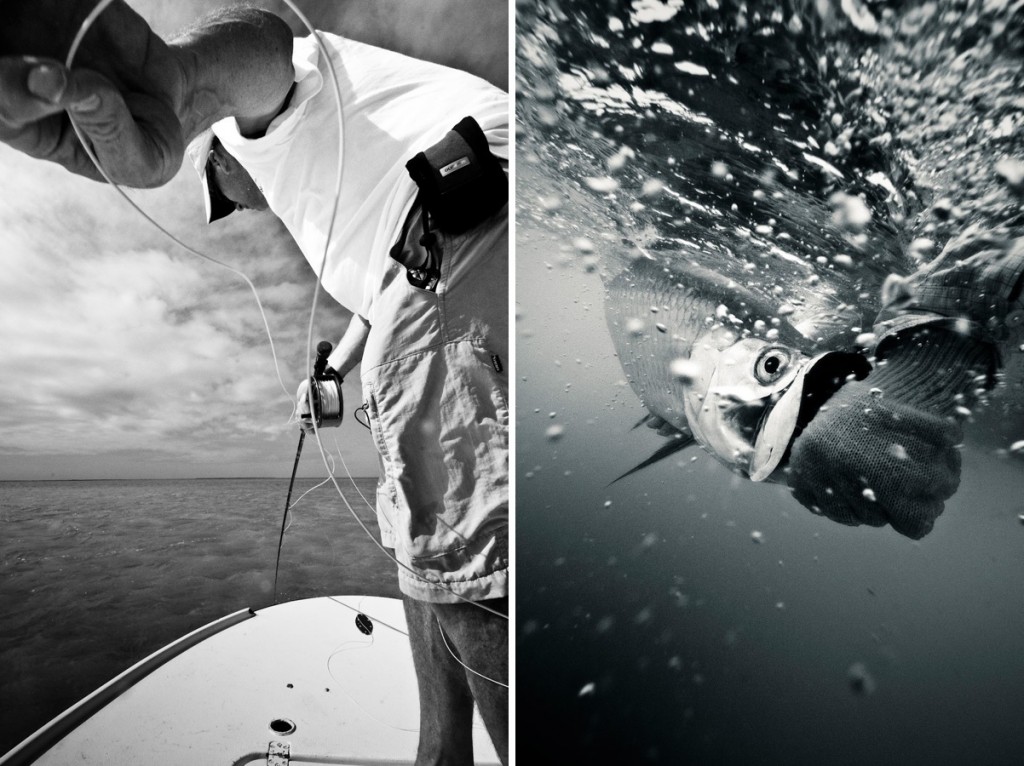
I can remember like it was yesterday jumping my first big tarpon in the Florida Keys.
One hundred plus pounds of fish completely leaping out of the water and crashing down like a free falling Volkswagen Bug. That image will forever be burned into my memory. The only problem is I didn’t end up landing that tarpon. To be brutally honest, my hook set totally sucked donkey balls. I know what your thinking. I’m a trout guide, and I probably set the hook like I was trying to hook a trout, right? Yes, I’ve done that before, but my mistake this time was only setting the hook once. Below are five tips for getting better hookups with tarpon, provided by Capt. Joel Dickey.
4 TIPS FOR GETTING BETTER HOOKUPS WITH TARPON
1. Keep your rod tip on the water and always point it in the direction of your fly line and fly during your retrieve.
Not pointing your rod tip at your fly line and fly often results in adding unwanted slack between you and the fish. This small amount of slack will increase your chances of not getting a solid hook set. You also will find it hard to feel the bite.
2. Use a 100% strip set when setting the hook.
You can apply far more pressure and power in a hook set with a firm strip set than you can with the fly rod. Many novice saltwater anglers make the mistake of thinking the power comes from the fly rod.
3. Set the hook multiple times for better hook penetration.
When a tarpon eats from left or right often a single hook set will be adequate
Casting Distance Does Play A Factor In Success

Saltwater fly fishing often calls for long accurate casts for the chance of success, and quite often it holds just as true on your favorite trout streams. Of the countless hours I’ve spent guiding my trout clients the past ten years, I’ve witnessed over and over again, how important just a couple more feet of distance can be in getting a trout to eat. You just can’t always approach a hole and make a routine short cast. Often no matter how stealthy you are, you’ll spook the fish if you try getting closer. Occasionally, obstacles such as low hanging trees can make it impossible to get the proper casting angle unless your standing farther away. Other times you may run into a situation where different current speeds between you and your target require a longer cast to get an adequate drag free drift. That’s why it’s so important for fly anglers to get comfortable making above average casts. I’m not saying you have to be able to bomb out eighty feet of line, or that you’ll have to make super long casts all the time either. I’m just saying, there are times when you won’t be fishing that angler friendly pocket water that just calls for short roll casts and quick high-stick drifts. You need to be prepared to make longer casts when the need arises. Believe it or not, quite often trout will follow your flies down stream a good ways before deciding to eat. If your fly gets too close to you the trout will often see you and won’t eat. Making a longer presentation will provide that buffer zone for the trout to inspect and eat without seeing you. Remember that trout don’t have eyes in the back of their head as well. If you don’t get … Continue reading
Read More »Fly Fishing Runoff Can Mean Fish On
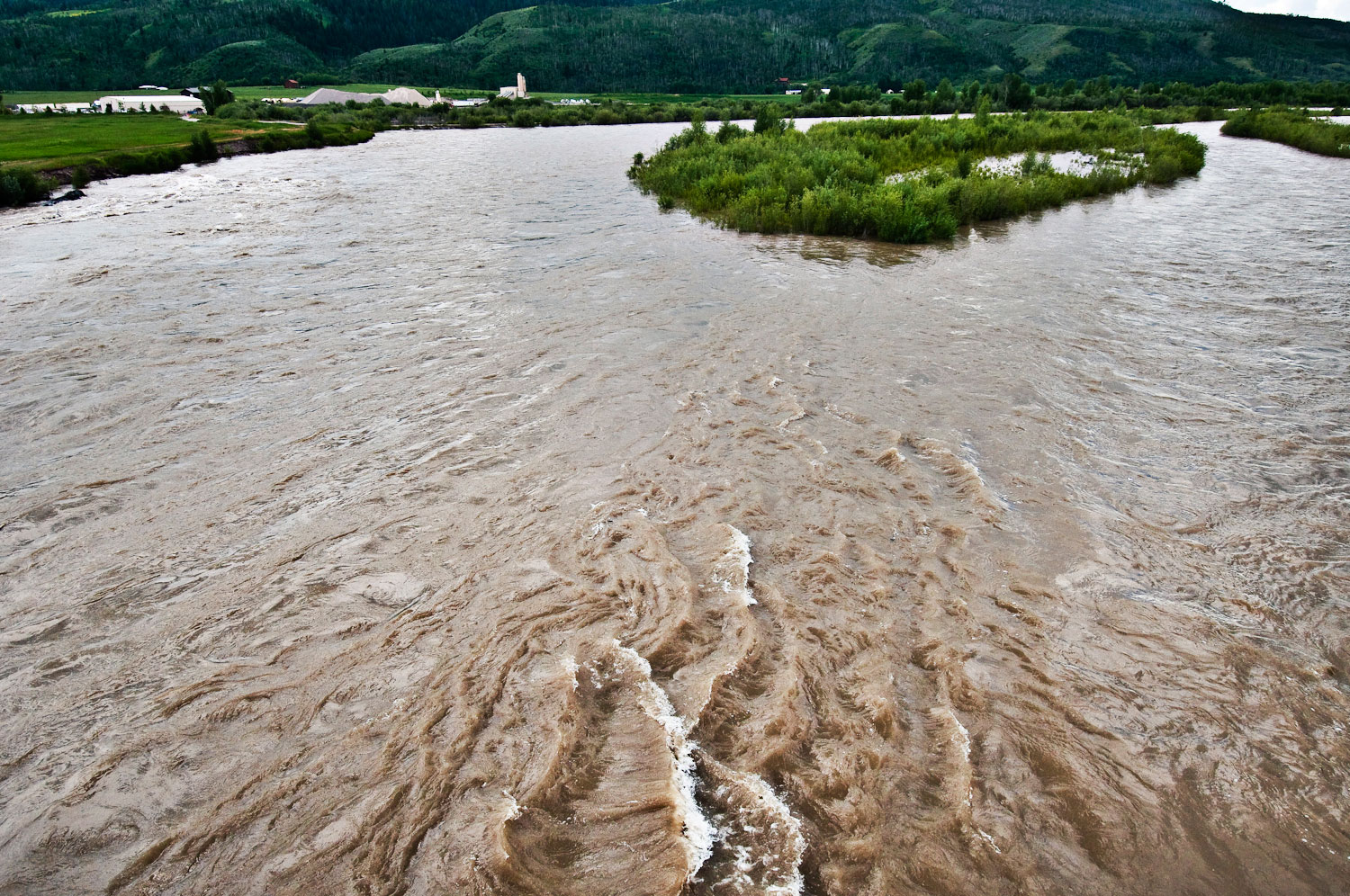
by Johnny Spillane
HAVE YOU EVER SHOWED UP AT A RIVER AND FOUND THAT INSTEAD OF THE CRYSTAL CLEAR WATER YOU WERE EXPECTING, YOU’RE STARING AT CHOCOLATE MILK?
Here in the Rocky Mountain this is a relatively common experience. It can happen for a number of reasons, huge rainstorms, someone doing river work above you or just your normal spring runoff. Don’t fret; while it might not be ideal, here are a few tips that can help you find some fish.
If the water is only slightly off color, you can basically use the same flies that you would if it was clear, just make everything a size or two larger. Instead of a size 18, put on a 16 or a 14. If that is not working, try adding a little bit more flash to your rig. We typically use flies with very little flash, but if the water is off color it can make a big difference in the amount of fish you stick just by changing to something that will reflect a little more light. If you were using a pheasant tail, try tying on a flash back pheasant tail and sometimes that is the only thing you will need to change.
If the water looks like chocolate milk, go big and go flashy. Those size 22 zebra midges that you planned on tying to 6x, that aint gonna work. I like to tie on a large white zonker and dead drift it with some sort of big buggy stonefly like a Pats Rubber leg. In off color water, fish will lose some of their inhibitions and hit anything that they can see. You just have to make sure that they see it. This is also a great time to experiment with different streamers that make noise, anything that will help draw a fish towards you fly.
Fishing runoff can also be one of the best times to hit a river. If it is fully blown, it might be better to explore other options but if a river is on the downside of its peak flows and it is starting to clear up, fishing can be phenomenal. Fish that are spread out all over the river during normal flows will congregate in areas of softer water during runoff and usually if you find one fish, you find 20. When the river is really high
Read More »Louis’s Fly Fishing Yoga
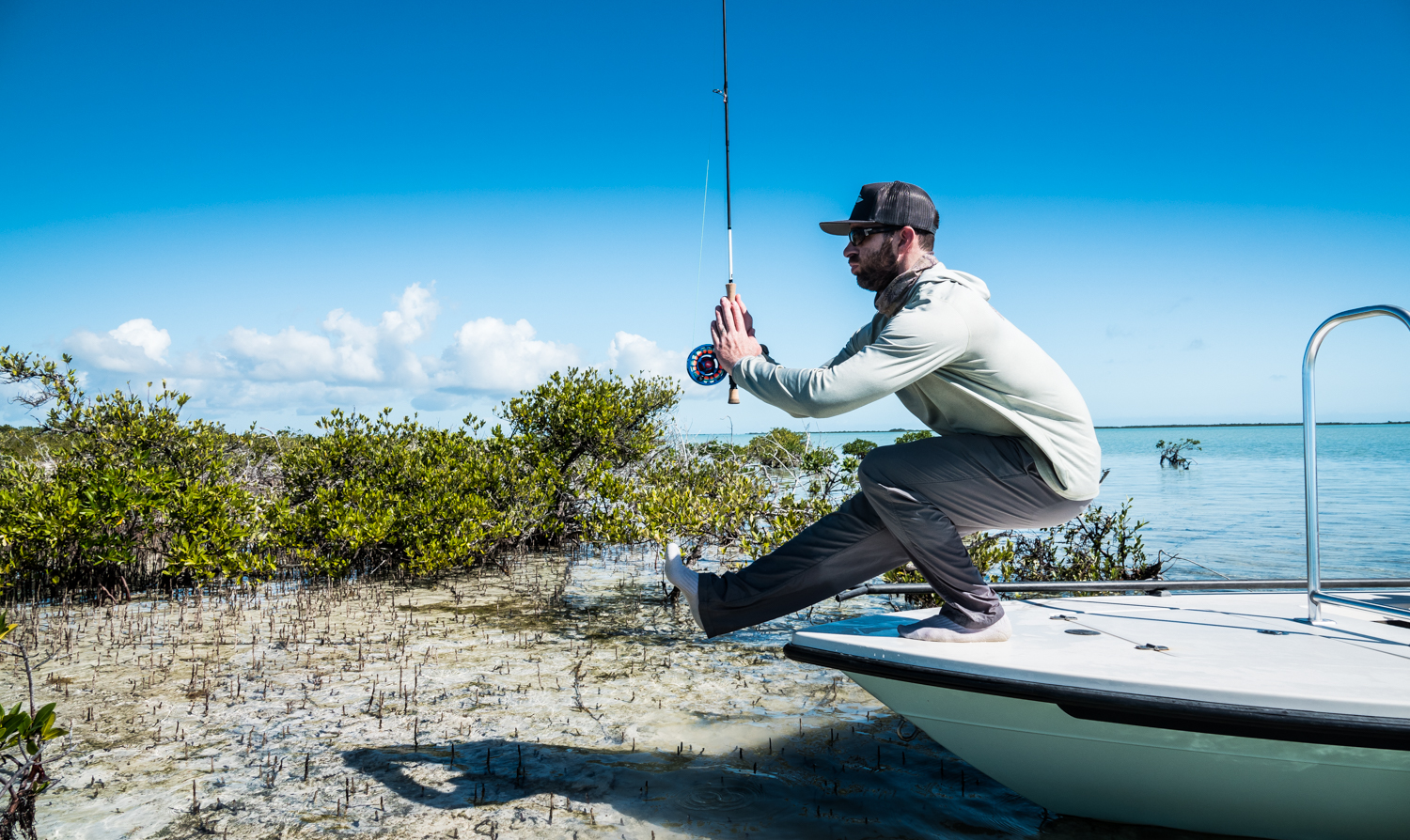
Here are two simple stretches that will help your fly casting.
From time to time I see a fly angler who has trouble with their casting because their shoulders are too tight. A limited range of motion can cause all kinds of problems with your cast. It’s worth taking some time do do some simple stretches.
I have a shoulder stretch I learned in martial arts training, that I do every day in the shower. It only takes a few seconds and it keeps my shoulders flexible. I have another I like to do before I hit the water. This insures that I’m in my best shape for casting.
I’m expecting my audience to have a lot of fun at my expense on this one. It’s silly to stretch in front of the camera anyway and I’m pretty tubby at the minute. It’s ok, go ahead and laugh. These stretches really do make a difference and you don’t have to do them in front of the camera.
WATCH THE VIDEO TO LEARN TWO STRETCHES THAT ARE GREAT FOR FLY FISHERS.
Read More »My Two Favorite Picky Trout Tailwater Nymphs
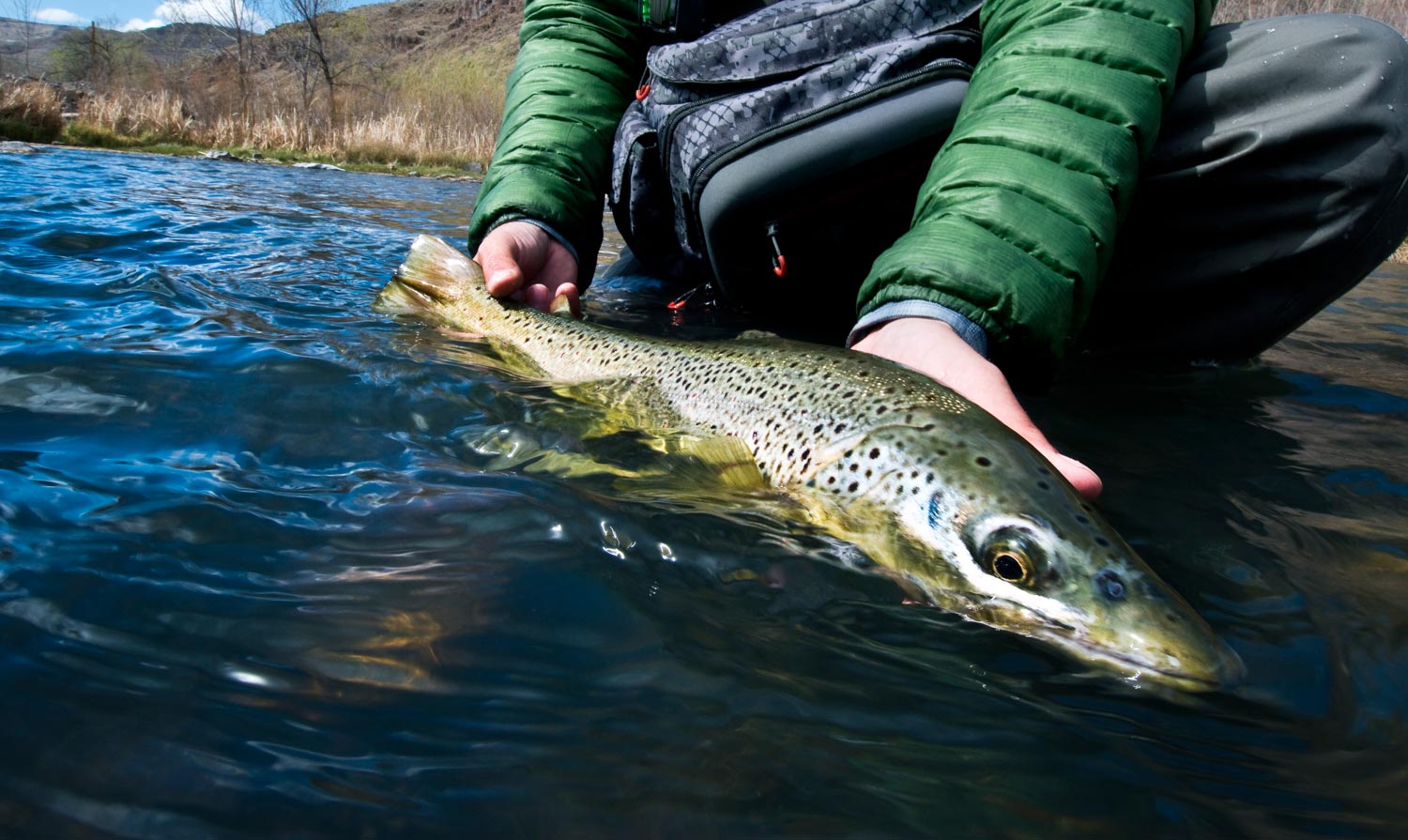
These two patterns never let me down on tough tailgaters.
Most of you are aware that Louis and I just got back from fly fishing and filming our segment for Playground Earth, sponsored by BFGoodrich Tires. We had the pleasure of fly fishing the Owyhee River, one of the finest trophy brown trout tailwaters I’ve ever had the opportunity to wet a line. The resident brown trout here proved to be quite picky, calling for not only accurate drag-free presentations from us, but our casts also had to be timed correctly to the feeding trout we had located. Out of the thousands of flies that we had on hand between us, two nymph patterns accounted for 80% of all trout landed. The splitcase bwo nymph and the splitcase pmd nymph were regular taken for naturals on the water througout our time on the Owyhee River. Never again will I only have a handful of these patterns on hand. I was down to my last splitcase nymph by the end of the trip.
Read More »